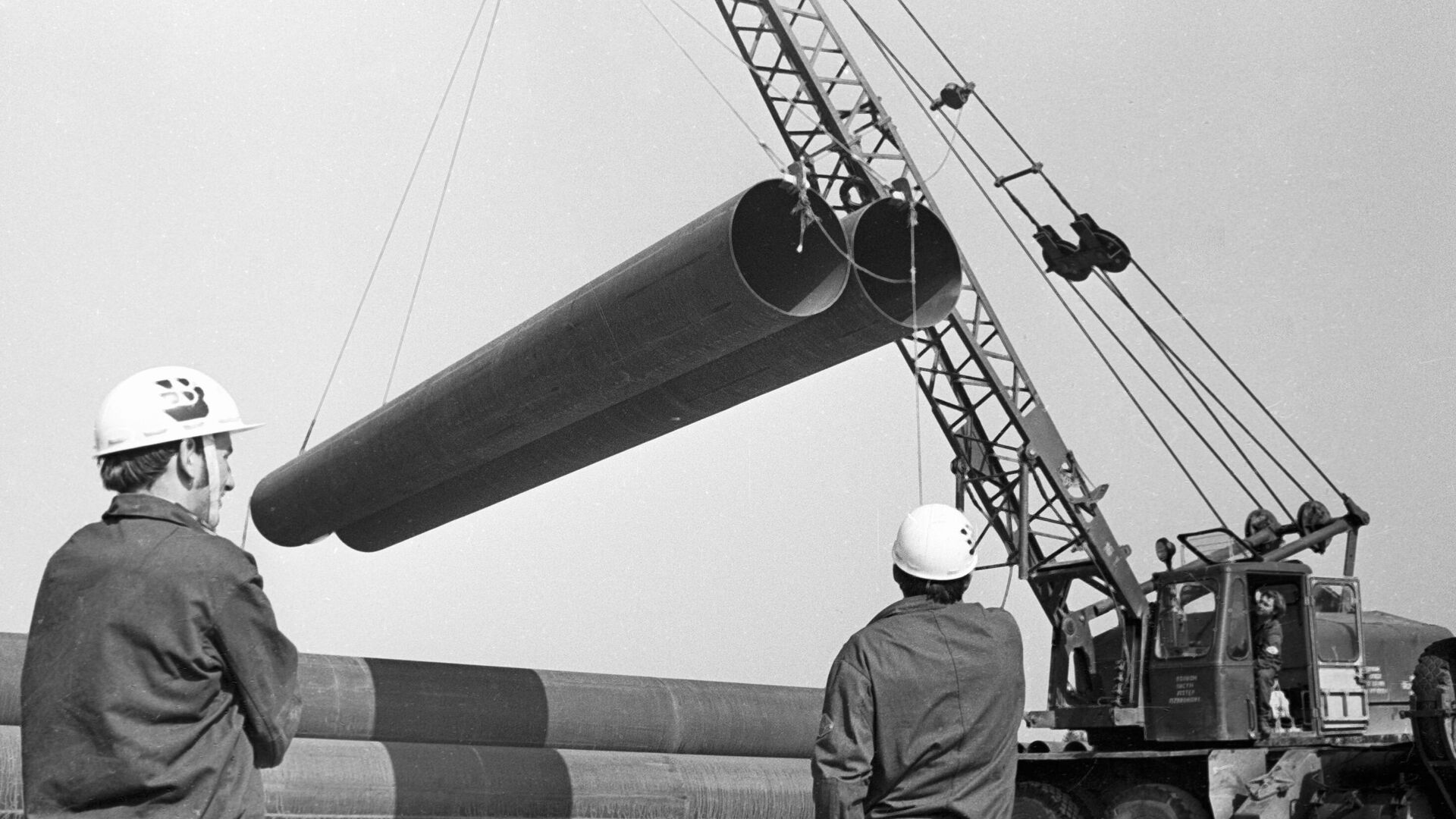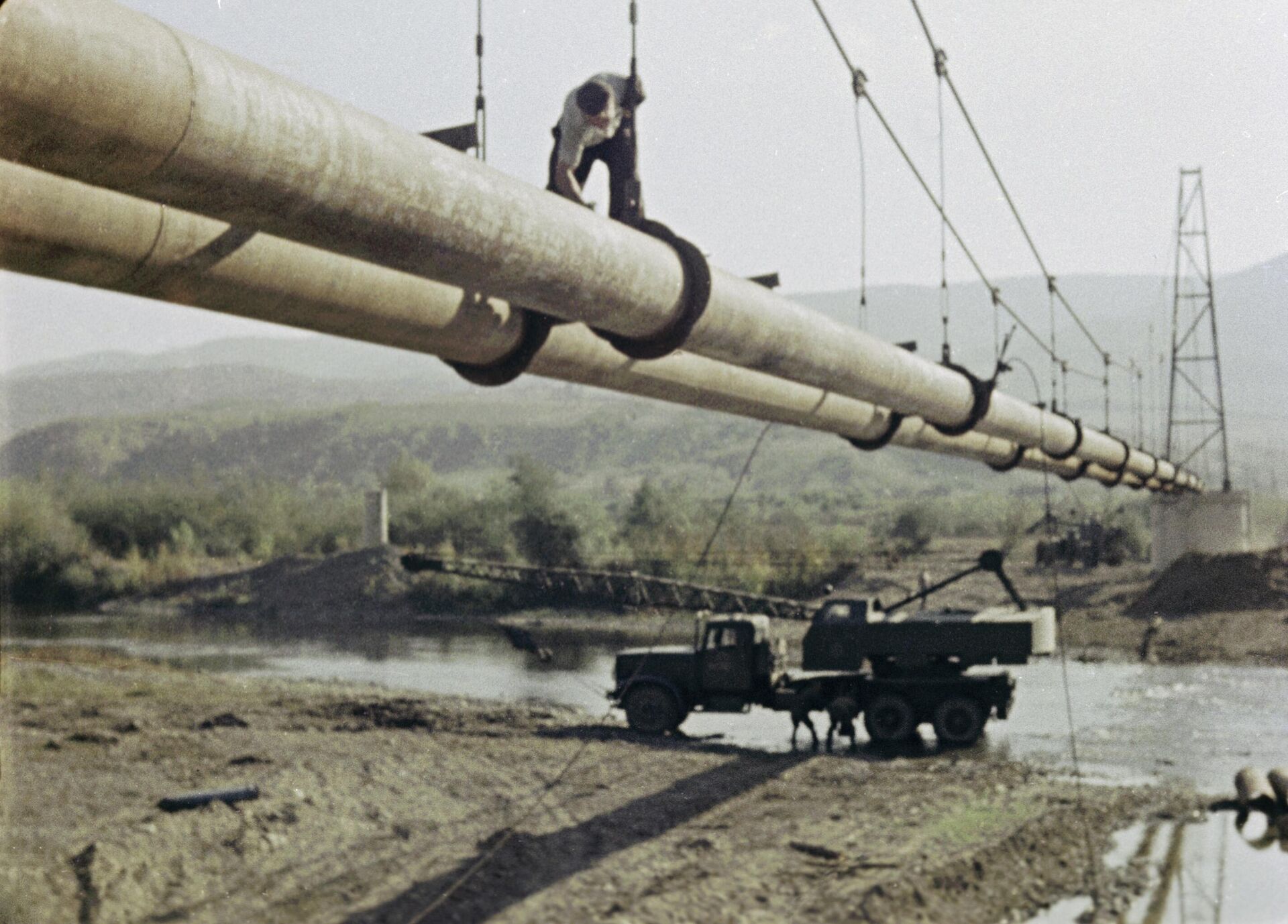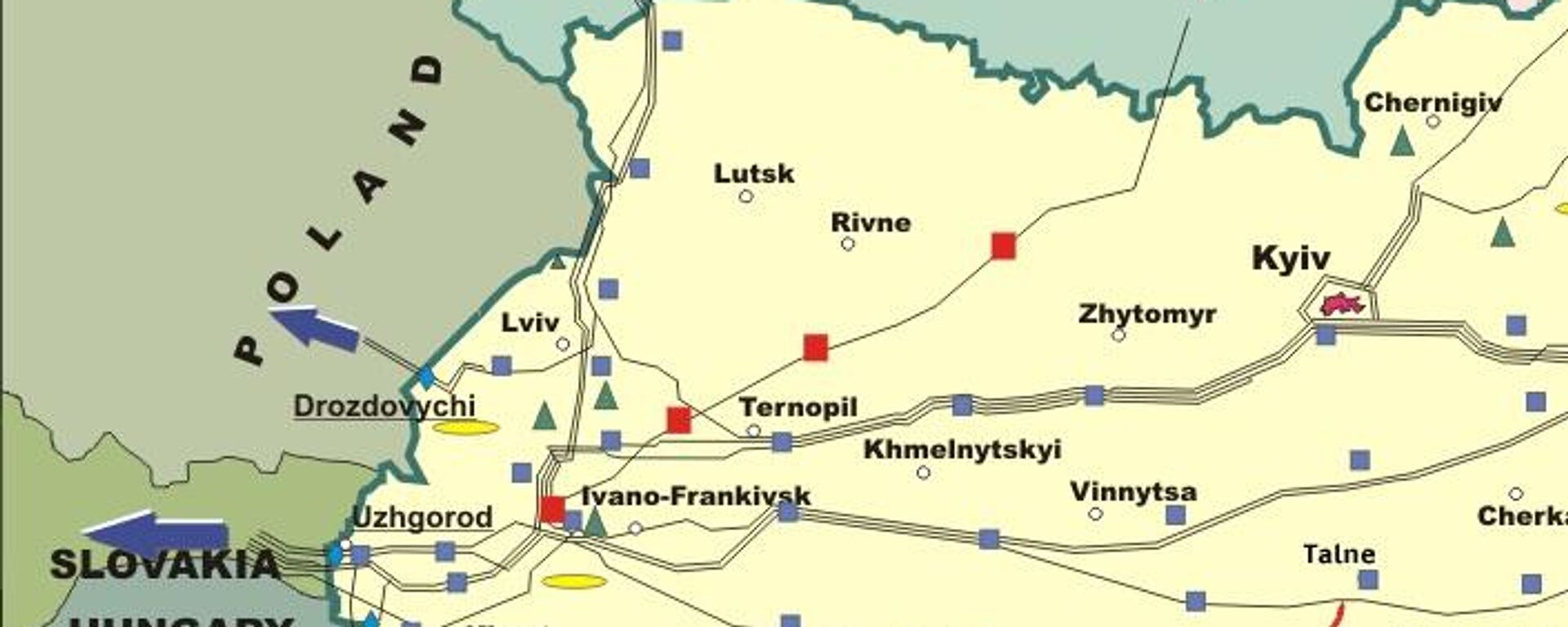https://sputnikglobe.com/20241015/druzhba-oil-mega-pipeline-that-evaded-us-sabotage-to-power-eastern-europes-economic-boom-1120559902.html
Druzhba: Soviet Oil Mega-Pipeline That Evaded US Sabotage to Power Eastern Europe’s Economic Boom
Druzhba: Soviet Oil Mega-Pipeline That Evaded US Sabotage to Power Eastern Europe’s Economic Boom
Sputnik International
Tuesday is the anniversary of the creation of Druzbha - the world's longest oil pipeline, and one of the most technically sophisticated pieces of man-made engineering every created. Here's what's important to know about the project, why it was conceived, and why the US and its allies tried, but failed, to stop it.
2024-10-15T14:06+0000
2024-10-15T14:06+0000
2024-11-09T19:22+0000
economy
russia
germany
business
hungary
european union (eu)
lukoil
oil
pipeline
oil pipeline
https://cdn1.img.sputnikglobe.com/img/07e8/0a/0f/1120563281_0:197:2942:1852_1920x0_80_0_0_d783e22721c9f111543923122731cca2.jpg
October 15 marks the 60th anniversary of the inauguration of the Druzhba (‘Friendship’) oil pipeline. Conceived in 1958 at a meeting of the Council for Mutual Economic Assistance – the Soviet-led analogue to Western European integration, Druzhba helped forge closer economic links between the USSR and its Eastern European allies, and eventually, between Russia and the whole of Europe.Drawn up to aid an economic boom being experienced by Eastern Europe, Druzhba was built to replace more costly and infrastructure-intensive rail-based oil deliveries.Sourcing oil from the Volga-Ural oil and gas basin and starting off in Almetyevsk, modern-day Tatarstan, Druzhba runs west to Mozyr in Belarus, where it splits into two routes – one to eastern Germany via Poland, and another through Ukraine toward Bratislava in Slovakia, Prague in the Czech Republic and Budapest in Hungary.The US sought to sanction the project into submission, slapping restrictions on Western European sales of large-diameter pipes to the Eastern Bloc after the Cuban Missile Crisis of October 1962. Russian Chelyabinsk’s industrialists saved the day, creating pipes of the necessary diameter.The success of the project led to the construction of a second line – known as Druzhba-2 and running along the same route, in 1974.This allowed the region to build tens of millions of new apartments, industrial goods and finished products ranging from cars and electronics to household appliances.After the USSR’s collapse, Germany’s reunification and the European Union’s expansion, Druzhba became a key source of fuel for Europe’s economic prosperity, helping Eastern Europe with its difficult transition to the market, and Germany in its effort to build on its status as an industrial powerhouse.Accounting for expansions (including extensions to deliver oil to southern Germany and Austria), Druzhba holds the record as the longest oil pipeline network in the world, consisting of a whopping 8,900 km of pipe, 46 pumping stations, 38 intermediate pumping stations, and reservoirs that can hold up to 1.5 million cubic meters of oil.The pipeline has an estimated capacity to pump up to 2 million barrels per day, or nearly a fifth of Russia’s total oil output. Until recently, it accounted for up to half of all Russian oil exports.Killing Druzhba?The US, the EU and Ukraine have taken a series of steps to try and effectively kill the Druzhba-based energy partnership between Russia and Europe, with the EU banning deliveries of Russian oil through the northern portion of the pipeline in the summer of 2024, and Ukraine raising transit costs by more than 75%, and in July 2024 prohibiting supplies of Lukoil oil through the pipeline’s southern line to Hungary and Slovakia.
https://sputnikglobe.com/20221001/history-repeats-itself-the-time-us-sabotaged-a-soviet-gas-pipeline-and-bragged-about-it-1101417106.html
https://sputnikglobe.com/20241008/kievs-gaseous-threats-to-scrap-gas-transit-deal-with-russia-betray-lack-of-alternatives-1120475214.html
russia
germany
hungary
Sputnik International
feedback@sputniknews.com
+74956456601
MIA „Rossiya Segodnya“
2024
News
en_EN
Sputnik International
feedback@sputniknews.com
+74956456601
MIA „Rossiya Segodnya“
Sputnik International
feedback@sputniknews.com
+74956456601
MIA „Rossiya Segodnya“
what's the druzhba oil pipeline, how long is druzhba pipeline, how big is druzhba pipeline, how did druzhba avoid sanctions, what happens if druzbha oil pipeline is shut down
what's the druzhba oil pipeline, how long is druzhba pipeline, how big is druzhba pipeline, how did druzhba avoid sanctions, what happens if druzbha oil pipeline is shut down
Druzhba: Soviet Oil Mega-Pipeline That Evaded US Sabotage to Power Eastern Europe’s Economic Boom
14:06 GMT 15.10.2024 (Updated: 19:22 GMT 09.11.2024) Tuesday is the anniversary of the creation of Druzbha - the world's longest oil pipeline, and one of the most technically sophisticated pieces of man-made engineering every created. Here's what's important to know about the project, why it was conceived, and why the US and its allies tried, but failed, to stop it.
October 15 marks the 60th anniversary of the inauguration of the Druzhba (‘Friendship’) oil pipeline. Conceived in 1958 at a meeting of the Council for Mutual Economic Assistance – the Soviet-led analogue to Western European integration, Druzhba helped forge closer economic links between the USSR and its Eastern European allies, and eventually, between Russia and the whole of Europe.
Drawn up to aid an economic boom being experienced by Eastern Europe, Druzhba was built to replace more costly and infrastructure-intensive rail-based oil deliveries.
Sourcing oil from the Volga-Ural oil and gas basin and starting off in Almetyevsk, modern-day Tatarstan, Druzhba runs west to Mozyr in Belarus, where it splits into two routes – one to eastern Germany via Poland, and another through Ukraine toward Bratislava in Slovakia, Prague in the Czech Republic and Budapest in Hungary.
Members of the Soviet-led economic alliance contributed equipment and know-how to the project, with the USSR and Poland delivering 730,000 tons of 420-1,220 mm pipes, East Germany pumps for pumping stations, Hungary automation equipment and communications gear, and Czechoslovakia valves and fittings.
The US sought to sanction the project into submission, slapping restrictions on Western European sales of large-diameter pipes to the Eastern Bloc after the
Cuban Missile Crisis of October 1962. Russian Chelyabinsk’s industrialists saved the day, creating pipes of the necessary diameter.

1 October 2022, 12:20 GMT
The success of the project led to the construction of a second line – known as Druzhba-2 and running along the same route, in 1974.
With Moscow selling oil to allies via long-term contracts, Eastern Europe was largely insulated from the oil shocks suffered by the West in the 1970s and early 1980s. Between 1971 and 1980, Hungary’s material national income rose by 62%, East Germany’s by 59%, Poland’s by 73%, Czechoslovakia’s by 57%, and capital construction in these countries grew 1.9, 1.7, 2.2, and 1.8 times, respectively.
This allowed the region to build tens of millions of new apartments, industrial goods and finished products ranging from cars and electronics to household appliances.
After the USSR’s collapse, Germany’s reunification and the European Union’s expansion, Druzhba became a key source of fuel for Europe’s economic prosperity, helping Eastern Europe with its difficult transition to the market, and Germany in its effort to build on its status as an industrial powerhouse.
Accounting for expansions (including extensions to deliver oil to southern Germany and Austria), Druzhba holds the record as the longest oil pipeline network in the world, consisting of a whopping 8,900 km of pipe, 46 pumping stations, 38 intermediate pumping stations, and reservoirs that can hold up to 1.5 million cubic meters of oil.
Druzhba is also one of the most technically-sophisticated manmade engineering projects in history, crossing the Volga, Oka, Don, Dnepr, Dniestr, Vistula and Dunabe rivers and hundreds of smaller waterways, thousands of roads and railways, the Pinsk Marshes and the mountains of Carpathia.
The pipeline has an estimated capacity to pump up to 2 million barrels per day, or nearly a fifth of Russia’s total oil output. Until recently, it accounted for up to half of all Russian oil exports.
The US, the EU and Ukraine have taken a series of steps to try and effectively kill the Druzhba-based energy partnership between Russia and Europe, with the EU
banning deliveries of Russian oil through the northern portion of the pipeline in the summer of 2024, and Ukraine raising transit costs by more than 75%, and in July 2024
prohibiting supplies of Lukoil oil through the pipeline’s southern line to Hungary and Slovakia.
While Russia has proven able to replace its dependence on Druzhba by forging new energy ties with countries in the Global South, including India and China, Europe has been trapped by its own restrictions into buying more expensive and less dependable energy sourced in the US, leaving economic growth stagnant and industrial competitiveness in jeopardy.








